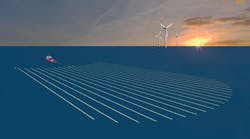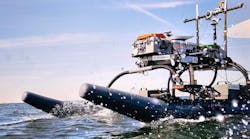Offshore staff
ST. JOHN’S, Newfoundland –Kraken Sonar Systems has received a non-refundable financial contribution of up to $450,000 from the National Research Council of Canada Industrial Research Assistance Program (NRC-IRAP).
The funding, which includes technical and business advisory services provided by NRC-IRAP, is being used to develop a real-time, ultra-high resolution seabed mapping system that is based on Kraken’s Interferometric Synthetic Aperture Sonar (INSAS) technology, real-time SAS signal processing algorithms, and is coupled with an onboard version of advanced 3D seabed visualization software.
The first system offering is expected to be released at the end of 2015 or in early 2016.
Karl Kenny, Kraken’s president and CEO said: “Knowledge about the seafloor is imperative to better understand our oceans. This NRC-IRAP contribution enables Kraken to accelerate the development of next generation real-time 3D seabed mapping missions that are optimized for unmanned maritime vessels used in both military and commercial applications.”
While conventional sonars are commonly used for seafloor imaging and bathymetry, they suffer from range and resolution limitations. However, these limitations are overcome by using INSAS systems.
INSAS uses sophisticated signal processing techniques to compare the multiple observations of the same area of seafloor to calculate its depth. The image resolution of the seabed is significantly increased – often by an order of magnitude – compared to conventional sonar technology. INSAS systems can achieve an image and bathymetry resolutions of a few centimeters even in very deepwaters and at very long ranges.
In addition to being used for military applications such as naval mine countermeasures, INSAS is a multi-market technology with great potential for offshore oil and gas surveying, hydrographic surveys, underwater archaeology, benthic habitat mapping, and deep sea mining.
The company says with high resolution INSAS it is possible to use image fusion techniques to combine the bathymetric data with the reflectivity data to create a real-time 3D representation of objects on the seabed. The ability to generate centimeter-scale resolution in all three dimensions has the potential to provide significant improvements in the detection, classification, and identification of small seabed objects.
03/19/2015




